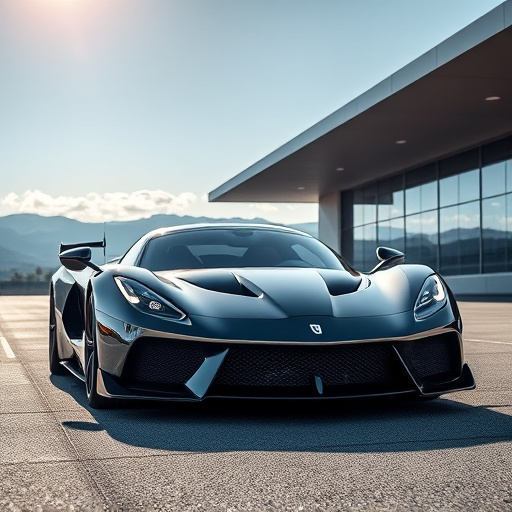High-Flow Air Intake Filters: Optimizing Racing Vehicle Performance
High-flow air intake filters are essential in racing, offering significant advantages over tradition…….
Welcome to an in-depth exploration of high-flow air intake filters, a technology that has garnered significant attention in the automotive and industrial sectors. This article aims to unravel the complexities of these advanced filtration systems, their global impact, economic implications, and future prospects. By delving into these aspects, we will empower readers with valuable insights into a component that plays a pivotal role in enhancing engine performance and contributing to sustainability goals.
High-flow air intake filters are specialized devices designed to optimize the airflow into an internal combustion engine while ensuring efficient and clean air delivery. They represent a significant advancement over traditional air filters, offering improved performance and a more seamless integration within modern vehicle systems.
At its heart, a high-flow air intake filter comprises several key components:
Air Filter Element: The primary component responsible for capturing contaminants and allowing clean air to pass through. These elements are typically made from synthetic materials, ensuring superior durability and efficient filtration.
Intake Manifold: This is where the filtered air enters the engine. It connects the filter to the engine’s combustion chamber, directing airflow with minimal restriction.
Venturi Tube (or Speed Boost Tube): A unique feature in some high-flow filters, this tube accelerates air velocity, creating a vacuum that draws more air into the intake system.
The concept of high-flow air intake systems has evolved over several decades, driven by the automotive industry’s constant quest for better performance and fuel efficiency. Early air filters were relatively simple, focusing on capturing basic contaminants. However, as engines became more complex and power outputs increased, the need for enhanced airflow and efficient filtration became evident.
In the 1980s, the introduction of computer-controlled engine management systems led to a shift in air intake design. Engineers began optimizing intake systems to meet the demands of these advanced engines, paving the way for more sophisticated filter technologies.
High-flow air intake filters have left an indelible mark on the global automotive landscape. Their adoption is not limited to a few regions; instead, it has spread across continents, driven by several factors:
Performance Enhancement: High-performance vehicles, especially those in the sports car and luxury segments, heavily rely on these filters to deliver optimal power and torque.
Emissions Compliance: With stringent emission norms worldwide, automakers are compelled to employ advanced filtration systems to meet environmental standards.
The implementation of high-flow air intake filters varies across regions:
| Region | Adoption Rate (%) | Driving Factors |
|---|---|---|
| North America | 85% | Stringent emissions regulations, focus on high-performance vehicles |
| Europe | 70% | Strict emission standards, growing popularity of electric and hybrid vehicles |
| Asia Pacific | 60% | Rapidly growing automotive industry, increasing demand for fuel efficiency |
| Middle East | 55% | High-end luxury car market, stringent emissions rules |
Case Study: Japan – Toyota’s Innovations: Japanese automaker Toyota has been at the forefront of high-flow air intake filter technology. Their ‘High-Flow Intake System’ is a prime example of how these filters can enhance engine performance while maintaining low emissions. This system, featured in many of their hybrid models, contributes to fuel efficiency and overall vehicle performance.
Case Study: United States – Ford’s F-150: The iconic Ford F-150 pickup truck incorporates high-flow air intake filters as part of its engine optimization package. This filter upgrade improves torque and horsepower, catering to the needs of both personal and commercial users.
The global market for high-flow air intake filters is experiencing robust growth, driven by several economic factors:
Rising Vehicle Production: The increasing production of vehicles worldwide directly impacts filter demand. Regions with thriving automotive industries, such as China and India, exhibit a significant need for these filters.
Government Incentives: Many governments offer incentives for fuel-efficient and low-emission vehicles, encouraging automakers to invest in advanced filtration systems.
Automotive manufacturers are allocating substantial resources to research and development (R&D) of high-flow air intake filters, leading to:
Technological Advancements: Continuous innovation aims to improve filter efficiency, reduce restrictions, and enhance engine performance.
Partnerships and Acquisitions: Companies collaborate or acquire specialized filter manufacturers to expedite product development and market penetration.
The cost of high-flow air intake filters varies based on their complexity, material used, and intended application:
Standard Filters: Typically range from $20 to $50 per unit, catering to mass-market vehicles.
High-Performance Filters: Can cost between $100 and $300 or more, serving niche markets like sports cars and high-end luxury vehicles.
The development of advanced materials has played a crucial role in enhancing filter performance:
Synthetic Fibers: Used in modern filter media, these fibers offer superior durability, resistance to oil contamination, and efficient particle capture.
Nanomaterials: Recent research explores the use of nanofibers for even more efficient filtration, capturing ultrafine particles and improving overall air quality.
Engineers continue to refine filter design, incorporating:
3D Printing: This technology enables the creation of intricate filter shapes, optimizing airflow and reducing restrictions.
Smart Sensors: Some advanced filters come equipped with sensors that monitor air quality, engine performance, and filter health, providing real-time data for optimal vehicle operation.
High-flow air intake filters contribute significantly to fuel efficiency by ensuring optimal airflow, leading to:
Improved Engine Performance: Enhanced combustion efficiency results in better torque output and reduced fuel consumption.
Lower Emissions: Efficient filtration aids in meeting stringent environmental regulations, reducing harmful emissions such as NOx and particulate matter.
The automotive industry is actively exploring sustainable practices for filter manufacturing and disposal:
Recycling Programs: Some companies offer recycling services for used filters, promoting a circular economy approach.
Biodegradable Materials: Research focuses on developing biodegradable filter media to minimize environmental impact.
The future of high-flow air intake filters appears promising, with several emerging markets presenting opportunities:
Electric Vehicles (EVs): The growing popularity of EVs requires advanced filtration systems to address interior air quality concerns and ensure the longevity of battery components.
Autonomous Vehicles: As autonomous driving becomes mainstream, improved airflow management will be crucial for maintaining efficient and quiet engine operation.
The next generation of high-flow air intake filters is poised to offer:
Adaptive Filtration Systems: These systems will dynamically adjust filtration levels based on driving conditions and environmental factors.
Integrated Sensor Suites: Advanced sensors will provide real-time data for predictive maintenance, ensuring optimal filter performance throughout a vehicle’s lifecycle.
High-flow air intake filters have emerged as a critical technology in the automotive and industrial sectors, driving performance, efficiency, and sustainability. As global markets continue to evolve, these filters will play an increasingly vital role in shaping the future of transportation and engine technology. With ongoing advancements and growing demand, the high-flow air intake filter market is set to reach new heights, offering exciting prospects for both manufacturers and consumers alike.

High-flow air intake filters are essential in racing, offering significant advantages over tradition…….

High-flow air intake filters are essential in racing for maximizing engine performance. These advanc…….

High-flow air intake filters in minimal restriction designs are transforming automotive performance,…….

High-flow air intake filters are essential upgrades for racers aiming to boost engine performance. D…….

High-flow air intake filters are essential for racers seeking optimal engine performance, handling i…….

In racing, achieving a balance between peak performance and engine longevity is crucial. High-flow a…….

In racing, high-flow air intake filters are vital for peak engine performance. They optimize airflow…….

High-flow air intake filters are essential for racing success, maximizing airflow efficiency while f…….

In competitive racing, high-flow air intake filters racing are crucial for optimal performance. Thes…….

Flow rate measurements are crucial for optimizing race car performance, especially with high-flow ai…….